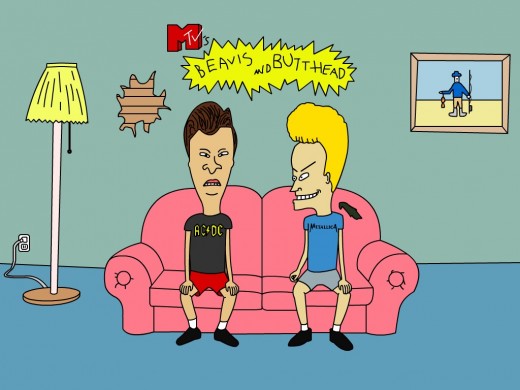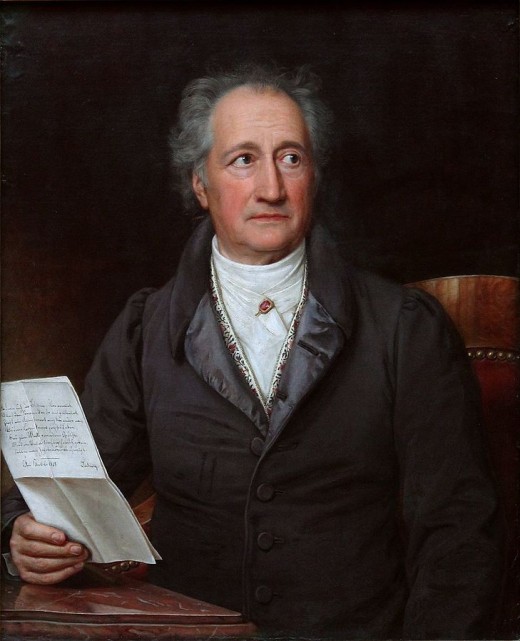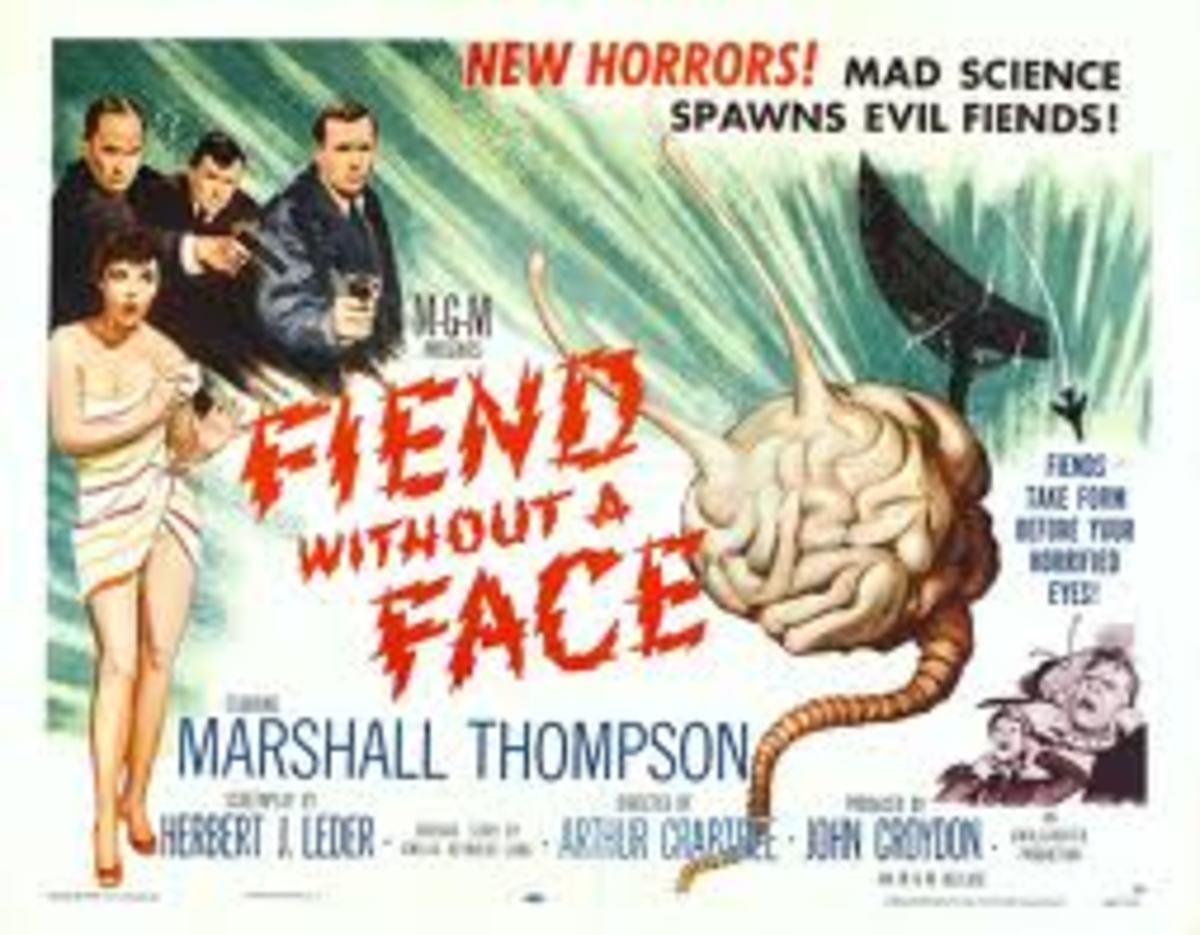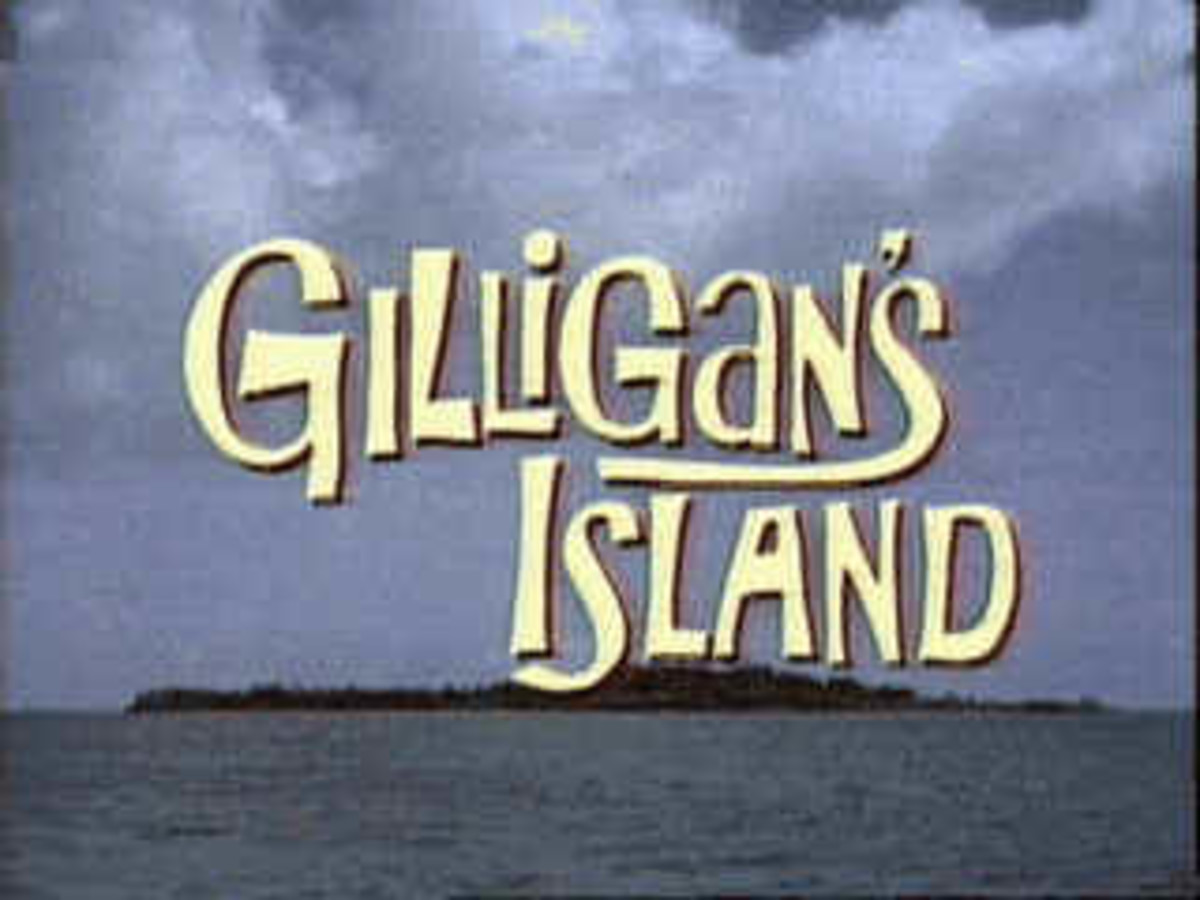"The TV Made Me Do It:" Art and its Effects
Beavis and Butthead

Bad boys, bad boys . . .
In the 1990’s, the go-to guys for bad media behavior were MTV’s Beavis and Butthead, the “stars” of Beavis and Butthead, a cartoon about two adolescent males who engage in anti-social behavior. Their behavior was not (always) due to them wanting to be anti-social; they didn’t seem to know any better most of the time and, without any moral compass guiding them, tended to burn things down, huff paint and other behavior untended adolescent males might find themselves getting into. They were negative role models aimed at an audience who would see them as negative role models—MTV’s coveted 12-24 male demographic.
The boys, Beavis and Butthead, that is, found themselves in hot water when “copycat” behavior started to appear in the non-animated world. Two separate cases in Ohio appeared where young children claimed to have imitated what the saw on the show and started fires, one resulting in the death of a two year old. In both cases, the protagonists claimed to have gotten the idea from Beavis and Butthead. In both cases, the children were young—under seven years old—and no one wondered why a five-year-old would be unsupervised watching MTV and have access to lighters, gas stoves and other materials. It must have been the show (it couldn’t have been Ohio, right?)!
Report on Beavis and Butthead
Imitative behavior of media models isn’t new, as David Marc points out in Bonfire of the Humanities (see my post “Everybody Is (or Should Be) a Critic” for much more on this book):
But how does the case of a TV viewer setting a fire after watching a TV show differ from the case of, say, a late nineteenth century middle-class reader reading Madame Bovary, finding empathy with the character, and deciding to go out and have a sexually fulfilling love affair at the expense of marriage vows and the social function of marriage in society? In at least one way it doesn’t. In both cases—in all cases—art is dangerous (see Plato’s Republic). The opening up of the Pandora’s box of the human imagination is not the nerdy little recitation of a rhyming couplet that dominates bourgeois mythology via primary school lesson plans. Art, or anything rating that word, affects the consciousness of those who give themselves to the experience.
Johann Wolfgang von Goethe

It could have been worse, right?
Too bad they weren’t tuned into to Romeo and Juliet. OK, maybe that’s not such a good example . . . Oedipus Rex? How about reading good, uplifting German literature? Johann Wolfgang von Goethe, a high-brow, hoity-toity author if there ever was one, wrote a novel entitled The Sorrows of Young Werther in which young Werther, after suffering many sorrows (sometimes the title just gives the book away), kills himself. The reviews, according to Martin Swales in his commentary on the novel, came in:
There was no shortage of disapproving voices. The Gentleman's Magazine for 1784 records the sudden death of a Miss Glover, and adds darkly:' The Sorrows of Werther were found under her pillow; a circumstance which deserves to be known, in order, if possible, to defeat the evil tendency of that pernicious work.'
Pick your poison
Which would you rather expose your children to?
Not necessarily the types of reviews that will get you a “Book of the Year” award (although it may help you reach Amazon.com’s bestseller list). Maybe Plato was right to ban poets—they would only corrupt fresh minds!
We would not have our guardians grow up amid images of moral deformity, as in some noxious pasture, and there browse and feed upon many a baneful herb and flower day by day, little by little, until they silently gather a festering mass of corruption in their own soul.
The Bobo Doll Experiment
Stimulus and Response
The point is, as Marc puts it, that art is dangerous. But to limit criticism of art and other cultural products limits our understanding of them. Most criticism of the media avoids seeing television as anything but 1) a commercial tool or 2) a psychological stimuli. Which is easier, gentle reader, scientifically determining through experimentation if watching a child punch a Bobo doll indicates a learned behavior from viewing TV or if punching a Bobo doll on TV is the right thing to do? Determining if violence on television causes viewers to be more fearful or if it is ethical to have graphic violence on TV? Break yourself into small groups and discuss.
Too bad Plato wasn’t a sociologist—he could have seen what happened when the poets go to the big time—the mass media! The Payne Fund Studies were a large scale set of investigations to try to determine the effects of mass culture on individuals, primarily children, adolescents and young adults. Henry James Forman in Our Movie Made Children displays suitable outrage (OUTRAGE!) about the effects of gangster films on the behavior of young boys:
When they testify, as does one boy, that "pictures about gangsters enabled me to become one," or, as another, a reformatory inmate, puts it "A picture that is pretty exciting and adventurous makes me want to do something and when I come out of a show...I would go with another fellow and break in some store that looked like it had a few dollars in it." When pictures produce particularly significant effects like this, it would appear high time that protest and responsibility take the place of apathy and irresponsibility.”
But shift the medium to the printed word, things are different. Take, for example, Newsweek’s review of American Psycho, a lovely story of murder and mayhem for March 4, 1991:
"American Psycho" stands accused, however, of being not only mediocre, but base, misogynous and dangerous. Its defenders invoke what might be called the Masters and Johnson law: better to know these things than not to know them, and fiction is our best probe into the dark side of the human condition. Although the novel will not likely cause any real deaths (unless chanting Giorgio Armani can kill), it does up the ante.
Images or Words?
Anyone who believes that words cannot incite someone to kill, please restudy history—any of it. Every time period will give examples of leaders who so fired up their populaces to override their better judgment and commit atrocities. It ain’t just the pictures, folks. I’m not saying that we should now treat books like we do television, examining the call-and-response nature of behavioral cause and effect. I am saying that we start on fundamentally different ground when we critique literature than we do television. Why?
What moves you?
Which do you believe has the most effective on human behavior?
Ooopsy!
Here is where we, those who study the media and culture, made a fundamental error. We let the terms of the debate shift without even acknowledging that they changed. By refusing to consider television as a cultural medium capable of delivering art, widely defined, into people’s living rooms, we left television, and other forms, to more sociological concerns. By denying that television should be considered one of the humanities and by denying that the humanities had something (anything) to say about television, we left the primary cultural delivery device to the market researcher and the social scientists. Television has largely been examined based upon the effects it has on society. Leave it to the sociologists—we will always have books. Television as a mass produced form cannot be good. At best, it is pabulum—it has no taste nor nutritional value but probably won’t kill you (at least not immediately). Don’t believe it—go read any five chapters from David Manning White and Bernard Rosenberg’s The Popular Arts: Mass Culture in America. The message of that tome is that television might be educational in the best circumstances possibly, but it’s best to avoid it altogether and not take any chances. What you won’t find in that text, as David Marc in Bonfire of the Humanities points out, is much real criticism of TV programs. Most of the volume is dedicated to TV as medium rather than TV program as culture. Television is seen as a path to the totalitarianism of your choice—Communists on the left, Fascists on the right.
Gilbert Seldes

Maybe it is art after all . . .
Look at the change in the tone of the criticism of Goethe and the Payne Fund criticism of James Cagney. The former is taking a moral tone—bad thoughts—while the latter is taking a behavioral tone—bad actions. Why the shift?
Anyone who believes themselves to be a humanist and see human beings as more than just a collection of drives and responses needs to break from the exclusive social scientific model of media criticism. Television needs to be examined in terms of truth and beauty along with stimulus and response. Television, like any cultural device, exists at the intersection of many vectors and it cannot really be abstracted from any of them. A television show is a business, an ideological device, a barometer of societal concerns, an ethical vehicle, a trigger and many other things. What does the news tell us about history, our collective values, the time we live in, the providers of program and so on? It can be hard to determine this because making these types of decisions requires a subjective judgment by the viewer—is this good/bad/moral/evil/exploitive—and then requires us to support that judgment by argumentation and criteria.








